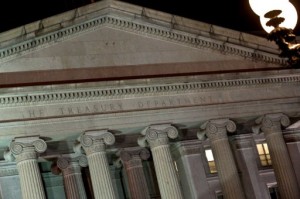By: Michelle V. RemoPhilippine Daily Inquirer
The Bangko Sentral ng Pilipinas is optimistic that growth of the economy will accelerate in the second half on the back of rising consumer demand.
According to BSP Assistant Governor Ma. Cyd Tuaño-Amador, expectations of growing consumer demand is encouraging businesses to expand production which, in turn, will help propel the economy at a pace faster than previously seen.
Latest official data showed that the economy, measured in terms of gross domestic product, grew by 4.9 percent in the first quarter. The government has set a target growth of between 5 and 6 percent for this year.
There is a good chance that the economy will grow faster in the second half considering the optimism of the business sector, Amador said.
The BSP reported the other day that the confidence index (CI) for businesses in the country improved to +34.1 percent in the third quarter from +31.8 percent in the second quarter. The outlook of enterprises for the fourth quarter showed an even higher level of optimism, with the index standing at +53.9 percent.
“If the indices for both the third and fourth quarters will rise, we may expect growth for the second half to be quite favorable,” Amador said.
There is a strong positive correlation between the confidence index and GDP growth, she explained. This means that an improvement in business sentiment will lead to faster expansion of the economy.
The BSP partly attributes rising consumer demand to the continuing rise in remittances from Filipino workers based abroad.
The BSP also said there are indications that investment demand is also on the rise, as companies produce more to match rising purchases of households.
“The underlying forces for domestic demand would be the main driver for growth. This internal buffer [domestic demand] should enable us [Philippine economy] to ride through very rough waters,” Amador said, referring to uncertainties in the global economy now affecting the growth performance of emerging Asian economies.
The United States continues to suffer from slow growth. Its credit rating had been downgraded by Standard & Poor’s due to its burgeoning debt.
Countries in the euro zone are also facing even more serious debt woes. Some nations even received bailout packages from the European Union and the International Monetary Fund.
The challenges confronting Western economies have been dragging down demand for export goods from emerging Asian markets.
But the Philippines continues to enjoy strong domestic demand, and that problems overseas are not expected to significantly harm the local economy, the Bangko Sentral ng Pilipinas said.
